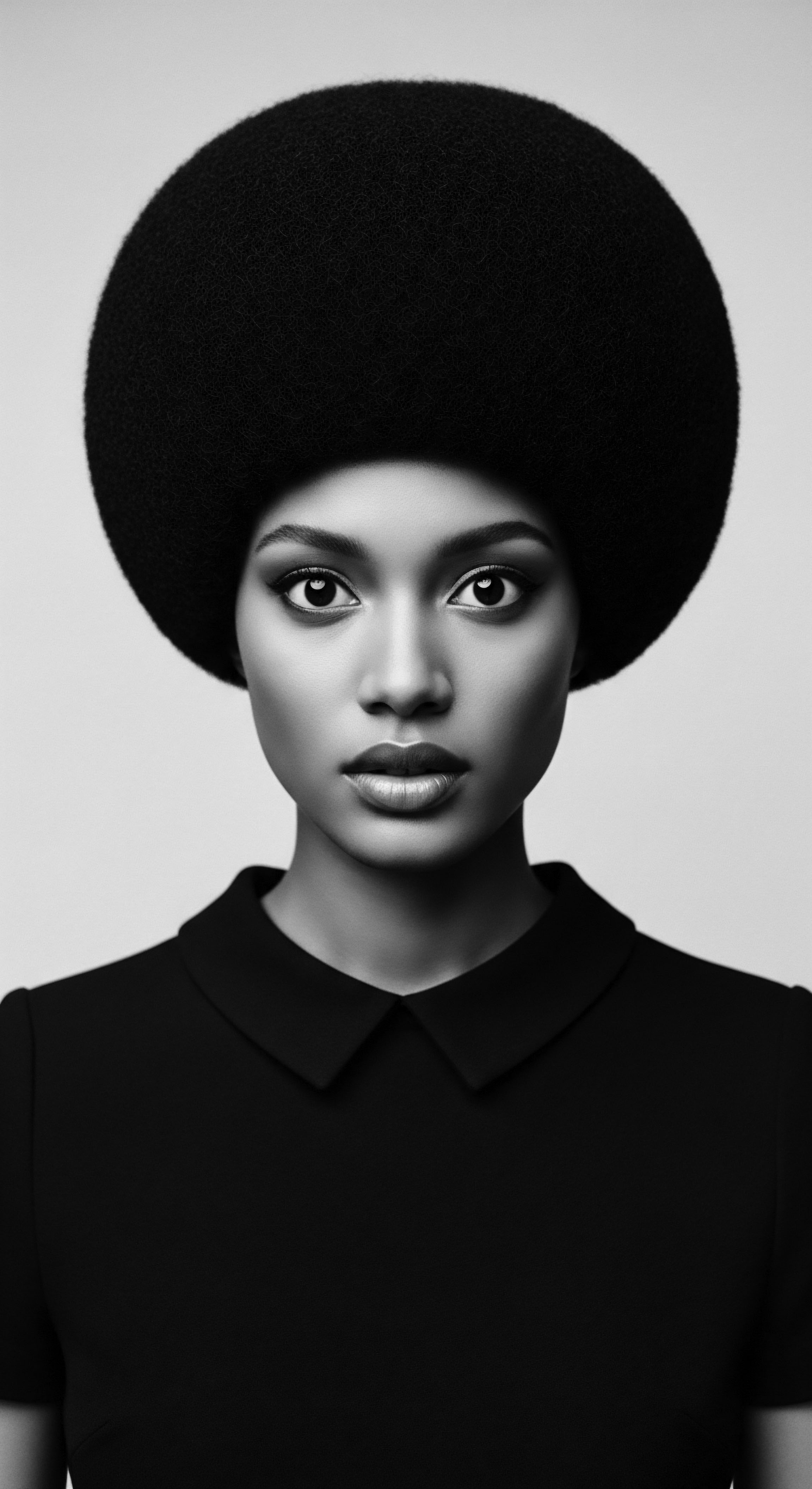
Roots
Within the deep memory of our lineage, each coil and kink of textured hair holds a whispered story, a chronicle of resilience etched not in parchment, but in the very fiber of being. For those whose ancestors traversed the brutal middle passage, hair was never merely an adornment or a biological outgrowth. It stood as a living archive, a repository of identity, spirit, and defiance against forces bent on erasure. This inherited legacy, woven through generations, speaks to a profound connection between ancestral practices and the persistent assertion of self, even amidst the most harrowing conditions.
To truly grasp the foundational understanding of hair’s purpose in these struggles, one must first consider its elemental biology through a lens colored by antiquity. Textured hair, with its distinctive helical structure, possesses an inherent strength and adaptability. This characteristic, observed and understood by ancient African communities, was not just a scientific fact but a sacred truth. The intricate patterns of coiling and kinking allowed for a multitude of styles that served not only aesthetic purposes but also practical, social, and spiritual functions.
Before the transatlantic disruption, these styles communicated tribal affiliation, marital status, age, and even one’s position within a community. They were living maps of cultural belonging, a visual language understood across diverse societies.
Textured hair, a living archive of identity and spirit, stood as a silent yet potent symbol of defiance through generations of adversity.
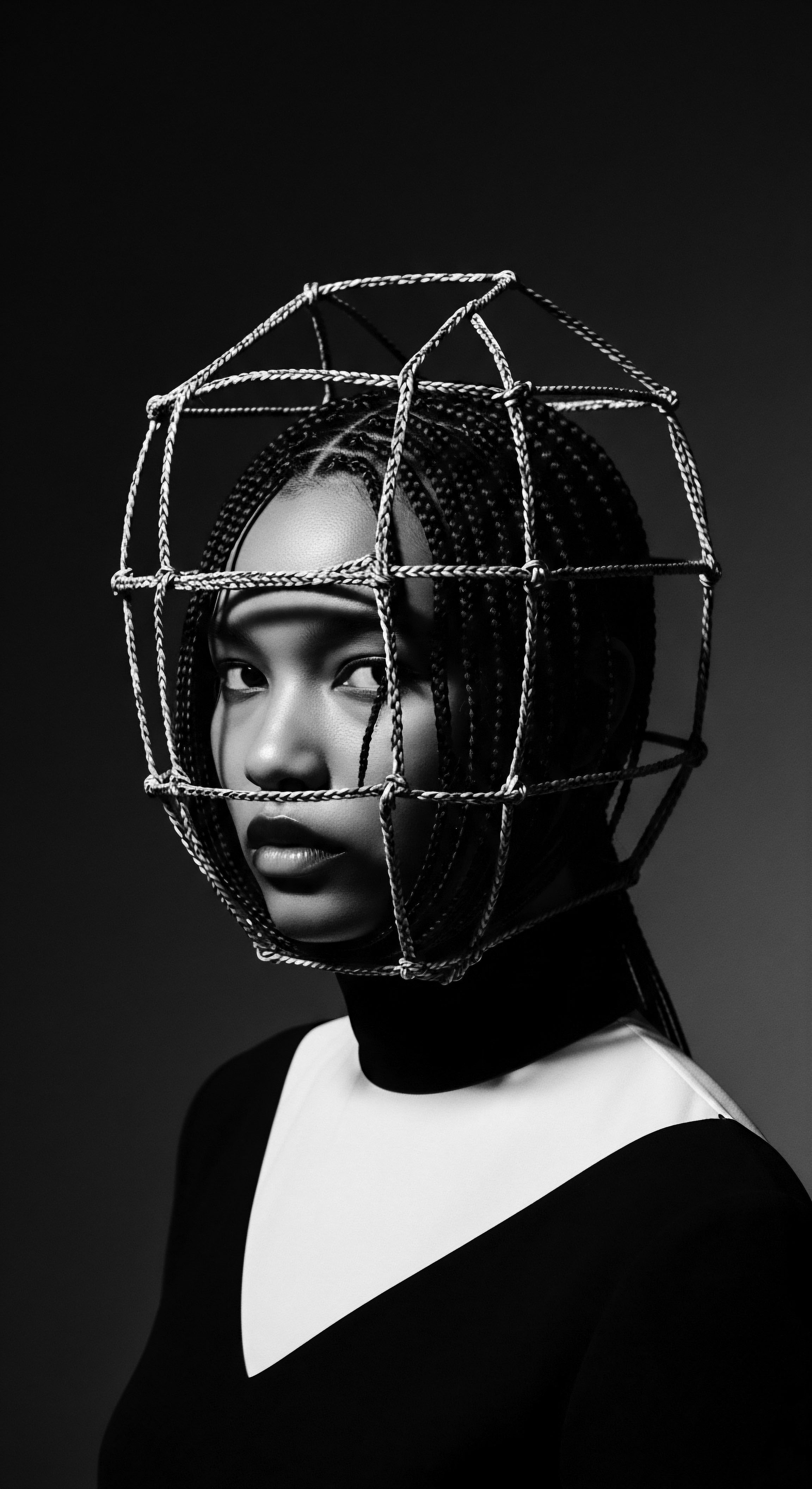
Hair Anatomy and Its Ancestral Meanings
The very structure of textured hair, from its elliptical follicle shape to the distribution of keratin within the strand, sets it apart. This biological distinctiveness, while later pathologized by oppressive systems, was originally revered. Ancient African civilizations understood the unique qualities of their hair, developing sophisticated methods of care and styling that honored its inherent nature. The dense packing of strands, the varied curl patterns, and the ability to absorb and retain moisture were not seen as challenges but as gifts, enabling styles that could protect the scalp from sun, shield the hair from dust, and serve as covert communication channels.
The hair’s growth cycle, a rhythmic process of anagen, catagen, and telogen phases, was likely observed with a deep respect for natural cycles. While modern science can delineate the cellular mechanisms, ancestral wisdom perceived these cycles as part of life’s grand design, connecting human existence to the rhythms of the earth. The vitality of hair, its growth and shedding, mirrored the cycles of planting and harvest, birth and transition. This holistic view meant that hair care was never separate from overall well-being or spiritual alignment.

Ancestral Classification of Hair Types
Before the advent of contemporary numerical or alphabetical hair typing systems, African societies possessed their own nuanced ways of describing and classifying hair. These systems were not based on arbitrary measurements but on observations of texture, density, and how hair responded to various natural elements and styling techniques. They often linked hair types to specific lineages, regions, or even personality traits, recognizing the vast spectrum of hair variations within communities. These traditional classifications, passed down orally, underscored the deep cultural significance of each hair pattern.
- Kinky Coils ❉ Often associated with profound spiritual connection and ancestral strength, these tightly wound strands offered unique styling possibilities for protection and adornment.
- Curly Springs ❉ Seen as vibrant and dynamic, these looser curls spoke to fluidity and adaptability, frequently styled in ways that celebrated their natural bounce.
- Wavy Textures ❉ Valued for their soft undulations, these patterns were often adorned with precious metals or shells, signifying status or ceremonial readiness.
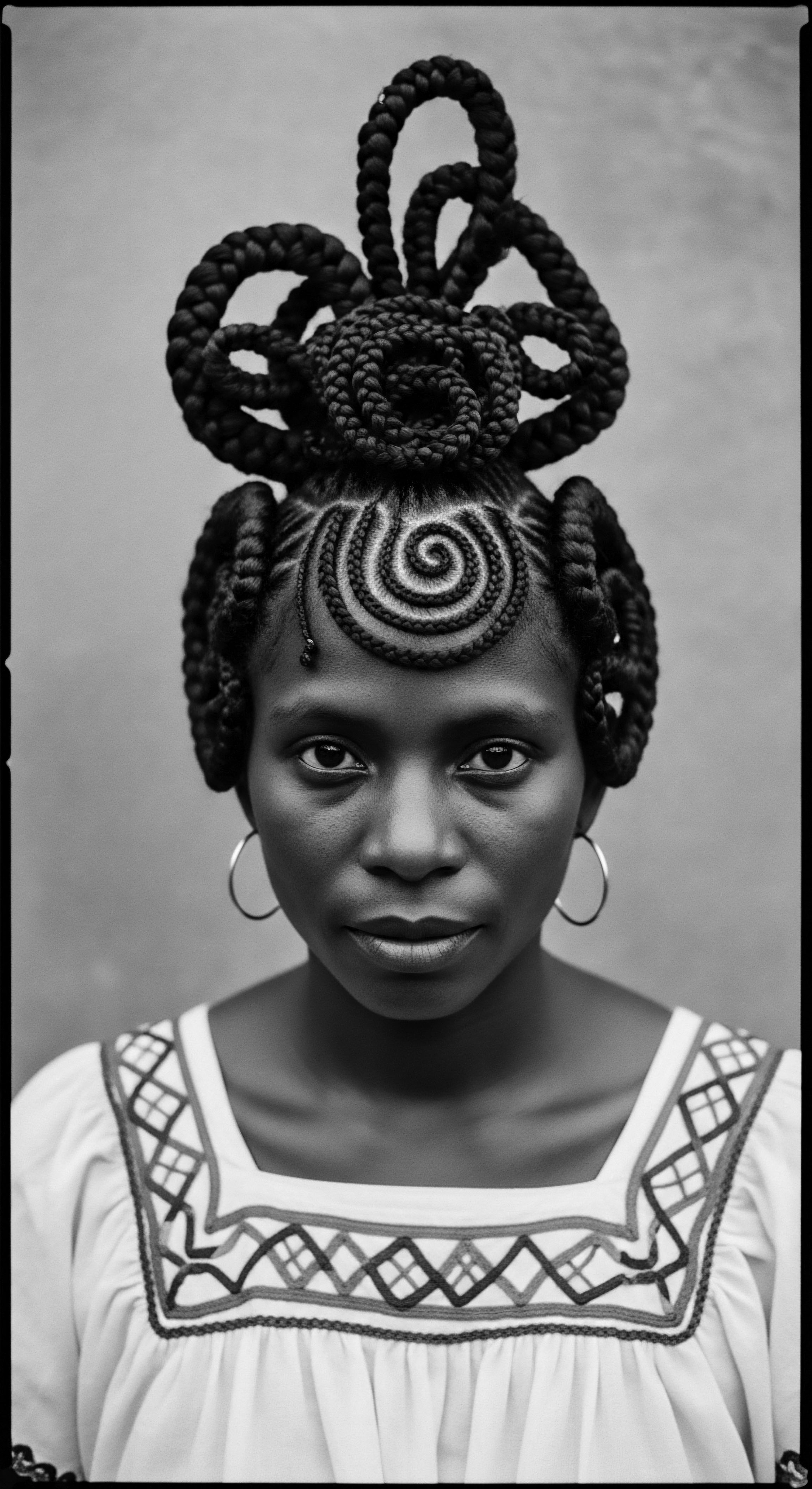
The Lexicon of Textured Hair Through Time
The language used to describe textured hair holds layers of history. During periods of enslavement, enslavers often stripped away the ancestral names and cultural contexts of hair, replacing them with derogatory terms that aimed to dehumanize and diminish. Yet, within the hidden spaces of slave quarters and later, the burgeoning Black communities, a resilient lexicon persisted and evolved.
Words that honored the hair’s natural state, its protective styles, and the rituals of care continued to be spoken, whispered, and eventually shouted. These terms became codes of recognition, symbols of shared heritage, and affirmations of beauty in a world that denied it.
The enduring use of terms like “cornrows,” despite their Europeanized name, points to the deep West African roots of these braiding patterns, which were far more than simple hairstyles. They were intricate maps, social markers, and, critically, a means of covert communication and resistance. The very act of naming, of reclaiming the language around hair, became a powerful assertion of autonomy.
| Ancestral Concept Hair as spiritual conduit, lineage marker |
| Colonial/Oppressive Terminology "Wool," "bad hair," "unruly" |
| Reclaimed/Modern Heritage Term Crown, Coils, Kinks |
| Ancestral Concept Intricate braided patterns for social coding, maps |
| Colonial/Oppressive Terminology "Plaits," "braids" (devoid of cultural context) |
| Reclaimed/Modern Heritage Term Cornrows, Cane Rows, Braids (with heritage understanding) |
| Ancestral Concept Hair care as communal ritual, holistic wellness |
| Colonial/Oppressive Terminology "Greasing," "fixing" |
| Reclaimed/Modern Heritage Term Nourishing, Tending, Wash Day |
| Ancestral Concept The transformation of language around textured hair reflects a continuous struggle for dignity and the enduring power of heritage. |

Ritual
Stepping from the fundamental understanding of hair’s biological and historical grounding, we turn our attention to the living practices that gave it voice and purpose ❉ the rituals of styling, the tools employed, and the transformative power these acts held. For those who navigated the brutalities of slavery and the systemic oppression of Jim Crow, hair rituals were not mere aesthetic choices. They were deliberate acts of preservation, communication, and quiet, yet profound, resistance. These practices, passed down through generations, reveal how enslaved and free Black individuals maintained a connection to their ancestral heritage and used hair as a canvas for defiance.
The creation of specific styles during slavery, for instance, often served as a coded language. Cornrows, originating from various West African braiding traditions, could signify escape routes, map pathways to freedom, or even carry rice and seeds for sustenance on arduous journeys. The skill required for these intricate patterns, often performed in secret or during fleeting moments of respite, became a powerful form of knowledge transmission, a silent curriculum of survival and solidarity. These practices, though often performed under duress, kept a vital link to African cultural heritage alive, serving as a reminder of a dignity that could not be stripped away.

Protective Styling as Covert Communication
The practice of protective styling, deeply rooted in African traditions, took on new dimensions during slavery. Styles like cornrows, Bantu knots, and twists, which shielded the hair from environmental damage and promoted growth, also became instruments of covert communication. The patterns and designs could signal allegiances, convey messages about planned escapes, or even denote social standing within the enslaved community, a subtle subversion of the imposed hierarchy.
Consider the narrative of Harriet Tubman, whose own hair, though not explicitly documented for its styling as a communication tool, lived within a broader cultural context where hair was a marker of identity and resilience. The very act of maintaining one’s hair, even in the face of forced labor and deprivation, was a quiet refusal to yield to dehumanization. This sustained effort, often requiring ingenuity with limited resources, underscored a commitment to self and ancestry.
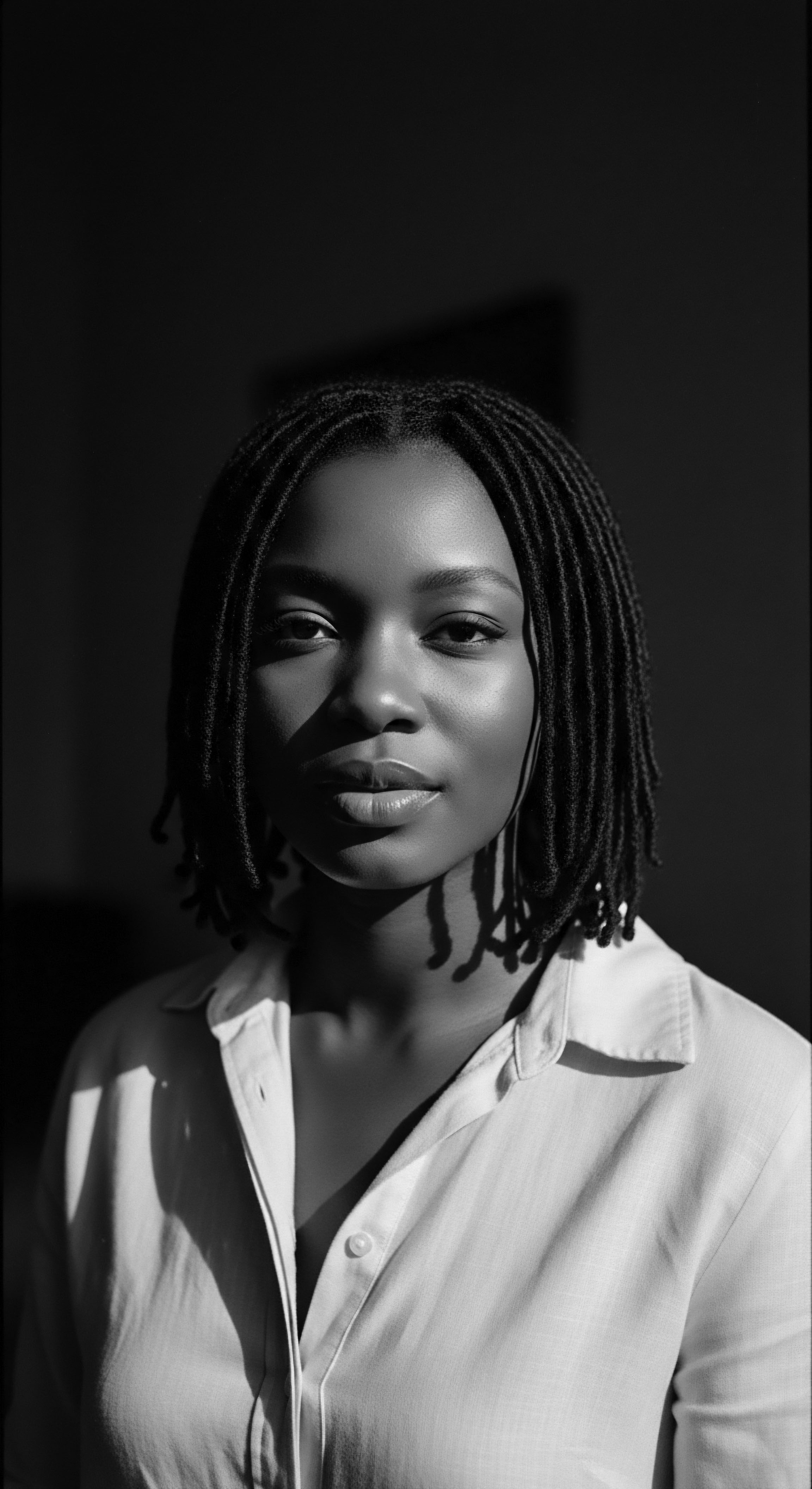
The Ingenuity of Tools and Techniques
Without access to traditional African grooming tools, enslaved people adapted, innovating with what was available. Bone combs, sharpened sticks, and even forks became instruments for detangling, parting, and styling. The communal act of hair dressing, often taking place on porches or in hushed gatherings, transformed into a sacred space of intimacy, storytelling, and shared resistance. It was during these moments that oral traditions were preserved, familial bonds strengthened, and strategies for survival exchanged.
The techniques themselves, like braiding, twisting, and coiling, were refined and adapted, maintaining their protective qualities while serving new purposes of covert expression. These methods, passed from mother to daughter, elder to youth, represented an unbroken chain of ancestral knowledge, a living legacy that defied the enslaver’s attempt to sever cultural ties.
Hair styling, born of ancestral practice, transformed into a coded language and a defiant act of cultural preservation amidst oppression.

Natural Styling and Identity Assertion
As the Civil Rights Movement gained momentum, natural hair became a powerful symbol of Black pride and a rejection of Eurocentric beauty standards. The Afro, a style that celebrated the natural volume and texture of Black hair, became a visible declaration of identity and a political statement. It was a repudiation of chemical straighteners and a return to an authentic self, a reclaiming of a heritage that had been systematically suppressed.
The embrace of the Afro was not merely a fashion trend; it was a profound cultural shift. It symbolized a collective awakening, a demand for self-determination, and a celebration of Black aesthetics. Activists like Angela Davis, with her iconic Afro, became visual representations of this movement, their hair speaking volumes without uttering a word. This deliberate choice to wear hair in its natural state was a direct challenge to the societal norms that had long dictated that straight hair was “good” hair and textured hair was “bad.”
- The Afro ❉ A bold declaration of racial pride and a rejection of assimilation, symbolizing a return to ancestral aesthetics and a collective identity.
- Braids and Locs ❉ Re-emerging as symbols of heritage and continuity, these styles connected wearers to ancient African traditions and a lineage of resistance.
- Twists and Coils ❉ Celebrated for their versatility and ability to honor the hair’s natural pattern, they offered a means of self-expression free from imposed standards.
The very act of caring for and styling natural hair during this period became a political ritual. It was a communal endeavor, a shared journey of discovery and affirmation. The development of natural hair care products, often homemade with traditional ingredients, further cemented this movement as one rooted in self-sufficiency and a reclamation of ancestral wisdom regarding plant-based remedies and holistic well-being.

Relay
How does the enduring legacy of hair’s purpose in resistance, spanning from the chains of slavery to the calls for civil liberty, continue to inform our understanding of holistic care and ancestral wisdom today? This query invites us to delve into the intricate interplay of biological resilience, cultural memory, and the persistent quest for self-affirmation through the lens of textured hair heritage. The journey of Black and mixed-race hair, from a tool of survival to a banner of identity, offers profound insights into the power of embodied history and the continuous unfolding of ancestral knowledge in contemporary practices.
The historical struggle to maintain and celebrate textured hair directly shaped the foundations of modern holistic hair care. What was once a clandestine act of defiance against oppressive beauty standards has evolved into a vibrant movement advocating for natural wellness, ingredient consciousness, and self-acceptance. The wisdom gleaned from generations of adapting to scarcity and resisting erasure now guides discussions on moisture retention, scalp health, and the therapeutic power of touch in hair rituals. This profound connection between historical necessity and present-day practices underscores the living, breathing archive that is textured hair heritage.

Holistic Care Rooted in Ancestral Wellness
The concept of holistic hair care, emphasizing the connection between physical, mental, and spiritual well-being, finds deep resonance in ancestral African practices. Before the era of forced migration, hair care was intrinsically linked to spiritual rituals, community bonding, and the use of natural botanicals. These traditions, though disrupted, found ways to persist and adapt, becoming vital components of resilience during periods of extreme hardship. The focus on nourishing the scalp, strengthening strands, and protective styling was not merely cosmetic; it was a survival strategy, preserving health in challenging environments.
During slavery, access to traditional ingredients was severely limited. Yet, enslaved individuals ingeniously utilized available resources—animal fats, kitchen oils, and local herbs—to maintain hair health. This resourcefulness became a cornerstone of ancestral wellness, demonstrating a profound understanding of natural properties and their applications.
The emphasis on collective care, with women often tending to each other’s hair, fostered a sense of community and mutual support, transforming a simple act into a powerful social ritual. This collective spirit, a direct descendant of African communal practices, continues to shape modern natural hair communities.

The Enduring Wisdom of Nighttime Sanctuary
The nighttime ritual, particularly the practice of protecting hair during sleep, holds a deep ancestral lineage. While modern bonnets and silk pillowcases are commonplace today, their predecessors were born of necessity and tradition. Enslaved women, seeking to preserve their hair from damage during labor and maintain its health in harsh conditions, likely devised methods of wrapping or covering their hair. This practical act also carried symbolic weight, signifying a quiet act of self-care and preservation in a world that denied them agency over their own bodies.
The use of head coverings, from elaborate wraps in Africa to simple cloths during slavery, served multiple purposes ❉ protection, hygiene, and a means of expressing identity or status. The evolution of the bonnet, from a functional item to a symbol of natural hair care, reflects this historical continuity. It is a tangible link to the past, a quiet acknowledgment of the generations who understood the value of safeguarding their strands. This practice, often overlooked, represents a profound and persistent act of self-preservation and a testament to ancestral ingenuity.
The wisdom of ancestral hair care, from communal rituals to protective nighttime coverings, shapes contemporary holistic practices, connecting past resilience to present well-being.
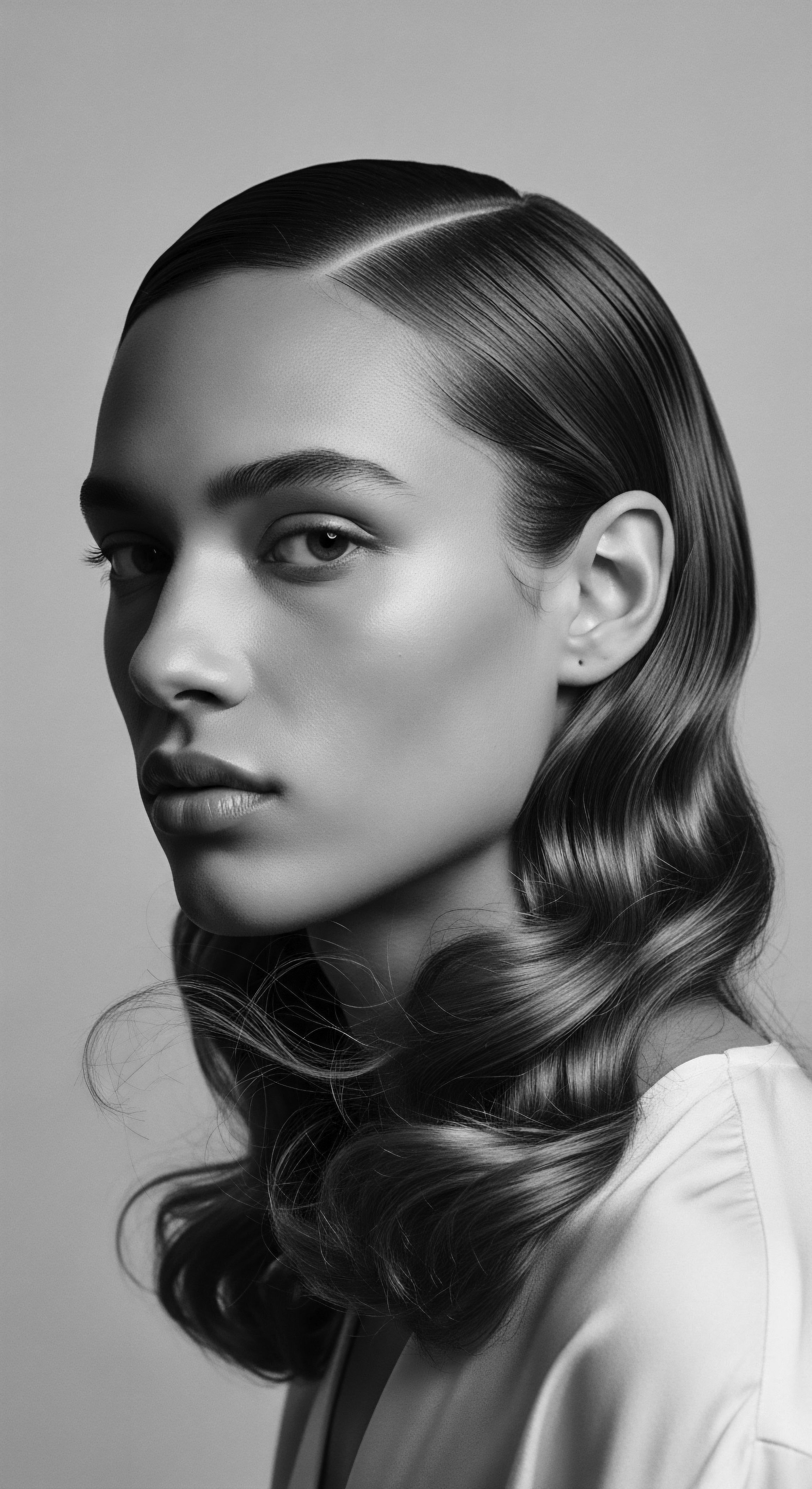
Ingredient Deep Dives and Historical Context
The modern natural hair movement often champions ingredients like shea butter, coconut oil, and various botanical extracts. These are not new discoveries; their efficacy was known and utilized in African societies for centuries. Shea butter, derived from the karite tree, was a staple for moisturizing skin and hair across West Africa, valued for its emollient properties and protective qualities. Similarly, coconut oil, prevalent in coastal African communities and the Caribbean, was prized for its penetrating moisture and strengthening benefits.
The knowledge of these ingredients and their application was carried across the Atlantic, sometimes covertly, sometimes through the sheer power of cultural memory. Despite the limited resources on plantations, enslaved people sought out or cultivated plants with medicinal and cosmetic properties, adapting traditional remedies to new environments. This historical persistence of knowledge, often through oral tradition and observation, underscores the scientific rigor inherent in ancestral practices. For instance, the use of aloe vera for scalp soothing or apple cider vinegar for clarifying the hair has echoes in ancient remedies for various ailments and hygienic practices.
The act of preparing these natural remedies, often a communal activity, became a form of shared knowledge and collective care. It was a quiet defiance against the harsh realities of their existence, a way to maintain a connection to their origins and affirm their inherent dignity. This enduring legacy of natural ingredient use forms a critical pillar of textured hair heritage.
A case study that powerfully illuminates this connection is the continued practice of using okra water as a hair detangler and moisturizer in certain African American communities, particularly in the Southern United States. While seemingly humble, this practice traces its roots back to West African culinary and medicinal traditions, where okra was a staple. Its mucilaginous properties, now understood scientifically as polysaccharides, were recognized ancestrally for their ability to soften and lubricate. Dr.
Lori L. Tharps and Ayana Byrd, in their work Hair Story ❉ Untangling the Roots of Black Hair in America (2001), discuss how African American women, denied access to commercial products or traditional African ingredients, often turned to kitchen staples like okra and flaxseed to condition their hair. This resourcefulness speaks to a deep ancestral understanding of plant properties and a resilient adaptation of traditional knowledge in the face of adversity, connecting a simple vegetable to a lineage of hair care ingenuity and cultural persistence. (Tharps & Byrd, 2001, p. 57)
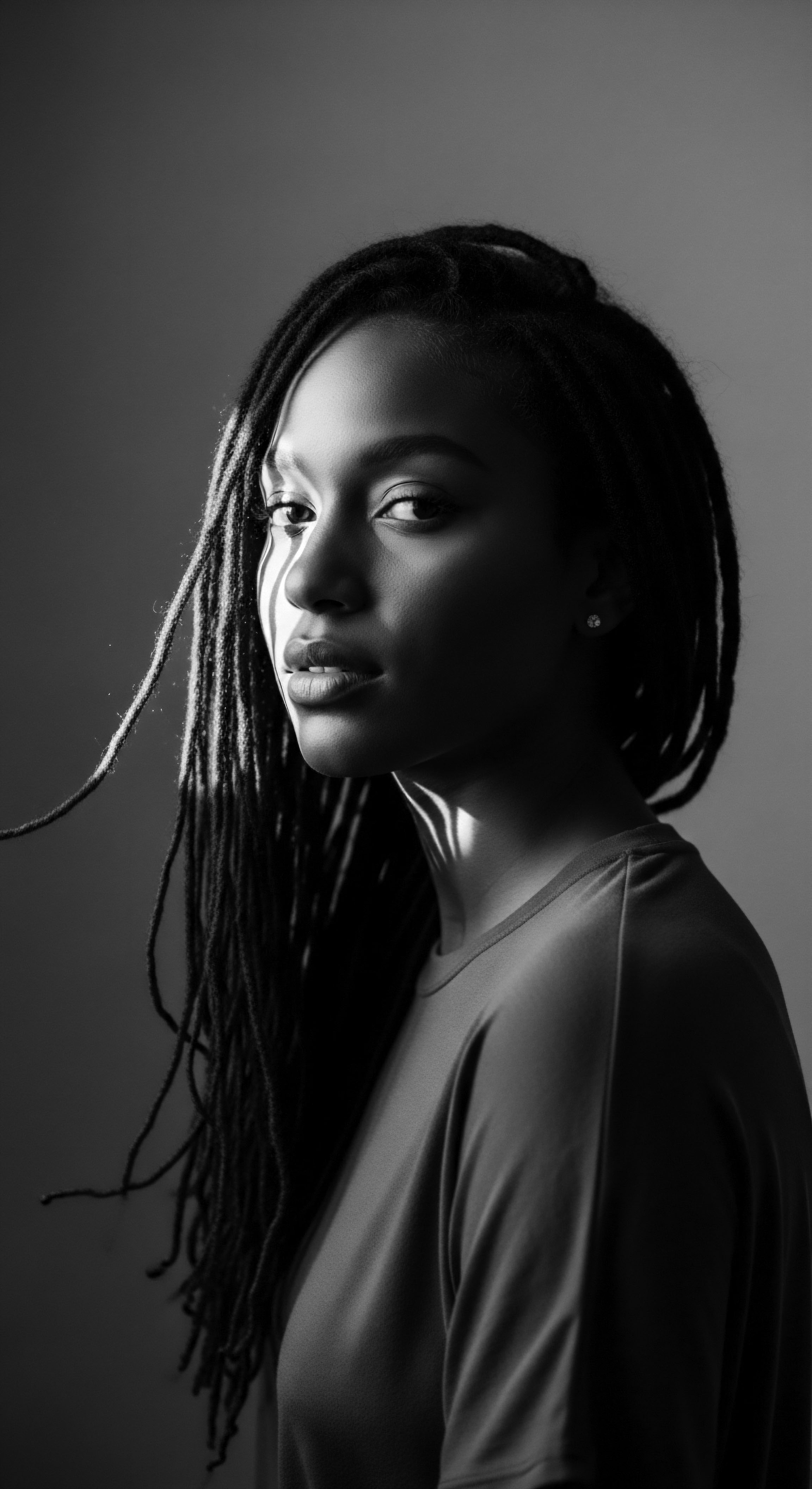
Reflection
The journey of textured hair, from the profound reverence of ancient African societies to its deliberate suppression during slavery and its defiant resurgence in civil rights movements, reveals a truth far deeper than mere aesthetics. It is a living testament to the enduring human spirit, a strand of identity that could not be broken. Each coil and kink holds the whispers of ancestors, the strength of those who resisted, and the beauty of a heritage that refused to be erased.
This living archive, continually unfolding, reminds us that caring for textured hair is not simply a routine; it is an act of honoring lineage, a profound connection to the “Soul of a Strand,” and a continuous affirmation of self-worth in a world that often seeks to diminish it. The story of hair in resistance is a powerful echo, reminding us that true beauty lies in authenticity and the unwavering celebration of one’s inherent being.
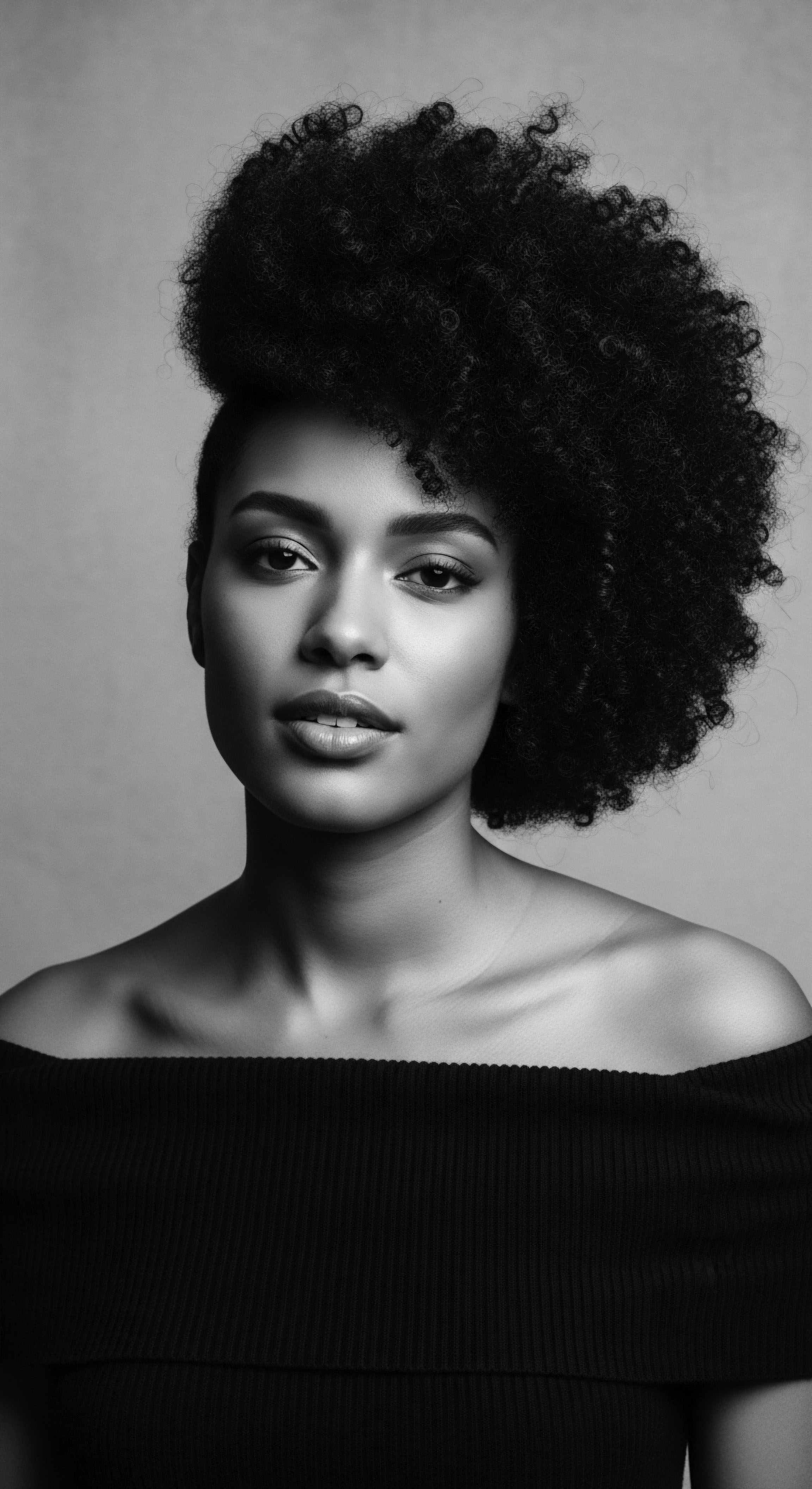
References
- Byrd, A. & Tharps, L. L. (2001). Hair Story ❉ Untangling the Roots of Black Hair in America. St. Martin’s Press.
- Hooks, B. (1992). Black Looks ❉ Race and Representation. South End Press.
- Patton, M. F. (2006). Twisted ❉ The Dreadlock Chronicles. Africa World Press.
- White, S. (2012). Styling Jim Crow ❉ African American Beauty, Fashion, and Hairdressing, 1900-1955. University of Illinois Press.
- Walker, A. (1983). In Search of Our Mothers’ Gardens ❉ Womanist Prose. Harcourt Brace Jovanovich.
